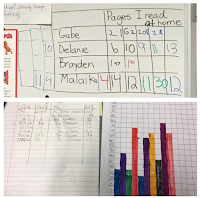As we think about the upcoming school year and developing and analyzing reading lives with our students, one way to do this is by using reading logs. I have many thoughts on the effectiveness and use of reading logs. For me, what it truly boils down to is, what is the purpose? Are we using the log consistently to learn about our reading life or is it just a nightly expectation that needs a parent initial for compliance. Reading logs can be a powerful way to monitor one’s reading life and artifact as to where we have been in our reading. It can house the adventures we have taken to far away lands in our fiction reading, as well as display our footprints of learning and interests.
In my classroom, I have used multiple types of reading logs - and for a few reasons:
- The purpose occasionally was adjusted from September and into the remainder of the school year. In the beginning of the school year, we collected “data” on our reading lives to determine when we get the most productive reading done and where. It helps confirm if we are selecting high interest and just right books. It also supports the long term and short term goals we set. (book/author/pages/ time in school and out of school reading)
- Keeping track of the volume of pages and books read was something we monitored throughout the year.
- Having an outlet to share the books we like with peers and the world (Goodreads)
- Logs that allow us to reflect and write quick reviews
- Logs that support our need to have books “on deck” and our long-term reading plan.
I value teaching students multiple ways to track their reading and multiple purposes to track reading. This way, throughout the year, they can select the way that works best for them. I still use a mode to track my reading and share out with my peers what I read. I used to keep a notebook to jot the books I have read with a rating and then in the back, list books that I wanted to read. I did this my entire life, until I came across the site, Goodreads.com. This is the site I use now because I can see what my friends are reading and they can recommend books to me, and vice-versa.
Below are examples of reading logs I have used myself and with students:
- Reading Log Chart
- Bookmark
- Notebook
- Bar Graph




Sarah, I totally agree! Reading logs need to have a purpose. In the primary grades, it takes a long time for the students to write/copy information. Instead of just writing titles and asking "mom" for initials, I turn it into logging for purpose of goal setting. Each student sets a goal that goes along with work within our units of study. The first unit which focuses on stamina, book choice, best reading spots, etc. By using goals like that helps me assess and stay on top of their learning. :)
ReplyDelete